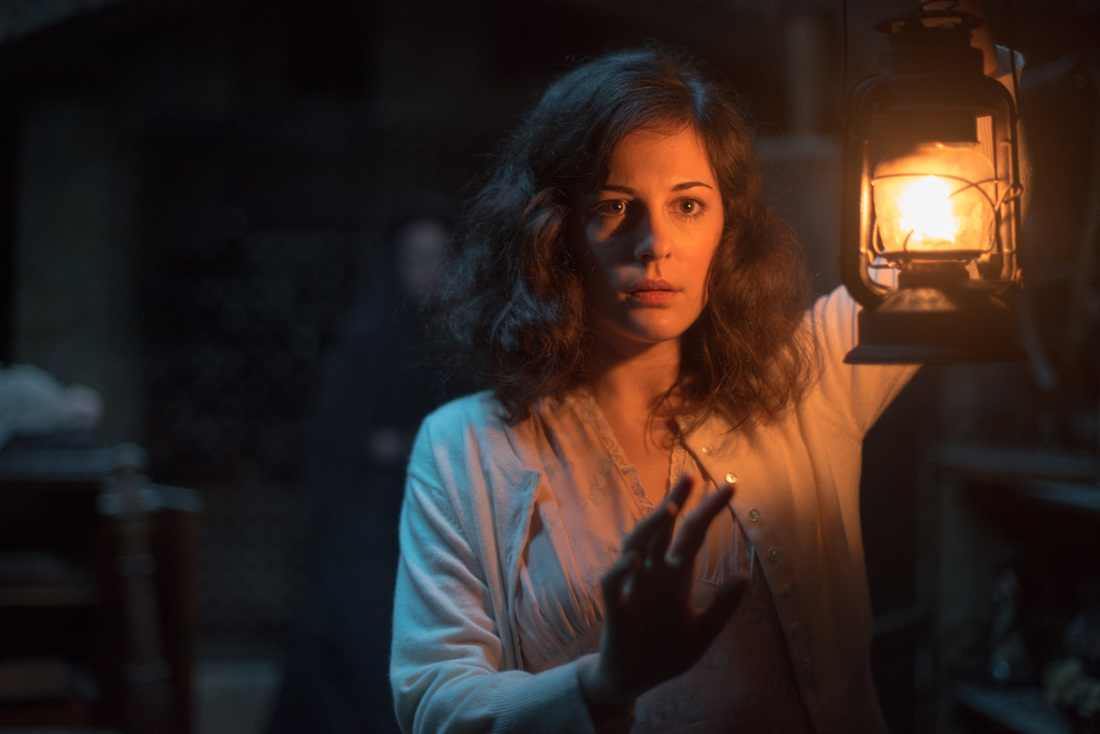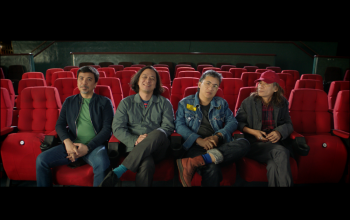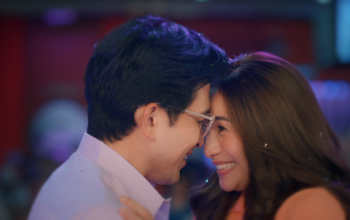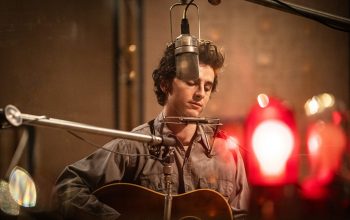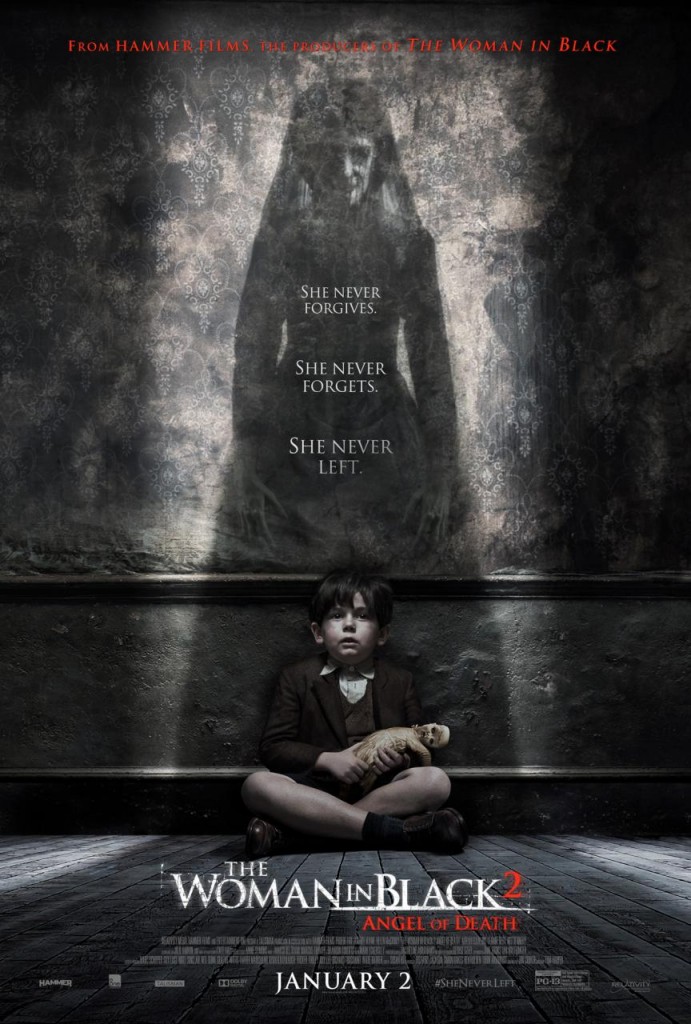 The well-oiled mechanics of James Watkins‘ The Woman in Black (’12) see an unintentional “advent” of the so-called “modern tactics” in ghost stories of markedly classicist forms. Taking note from the minimalist flair of Robert Wise‘s The Haunting (1960), whilst remaining cautious to service the modern spectator’s customary jolts, the film and its often wobbly framework may be due to Hammer Films’ reasonably assured step towards ascertaining its resurgence after its lengthy hiatus. It arrives to an awkward byproduct that is appropriately awkwardly received; yet, in Watkins’ efforts, The Woman in Black remains a studious and handsome feature, enough so that an eventual sequel seems only natural.
The well-oiled mechanics of James Watkins‘ The Woman in Black (’12) see an unintentional “advent” of the so-called “modern tactics” in ghost stories of markedly classicist forms. Taking note from the minimalist flair of Robert Wise‘s The Haunting (1960), whilst remaining cautious to service the modern spectator’s customary jolts, the film and its often wobbly framework may be due to Hammer Films’ reasonably assured step towards ascertaining its resurgence after its lengthy hiatus. It arrives to an awkward byproduct that is appropriately awkwardly received; yet, in Watkins’ efforts, The Woman in Black remains a studious and handsome feature, enough so that an eventual sequel seems only natural.
The sequel directed by Tom Harper, indeed, is a thoughtful and even in some instance efficient visual orchestration. I am speaking in the sense that of the few features of the returning Hammer Films thus far, The Woman in Black 2: Angel of Death is perhaps most conceptually set to that of the resurgent studio, whose most famous release, as many will remember, is the monster film The Curse of Frankenstein (1957). Harper almost reassures this: the barbed wires entangling a sheep, a young girl dying of suffocation whilst wearing a gas mask, and, indeed taking all its war subtexts undisguised, the film’s climax is set in a decoy airfield. It is a visual mechanism that has proven to have worked numerous times; the narrative, however, is a smorgasbord of recycled tropes, and proves an indefatigable hindrance. The gist, I surmise, is that the “Angel of Death” that Harper and scriptwriter Jon Croker try to present is war, whose nightmarish presence have claimed the literal and metaphorical lives of children.
Perhaps what is lacking, then, is a more functioning narrative, where its characters are valued more than mere figures of functioning symbolism: Phoebe Fox, for instance, portrays the role of Eve Parkins, a school teacher with a looping nightmare—her son, after birth, is taken away from her—who is doomed with the sight of this repetition, albeit this time around in her waking hours. Fox, along with the other actors, are surprisingly able, spewing out bursts of emotions in scenes that need it. “Not again,” cries Eve, and you get the sense that she is speaking of not only the haunting in the Eel Marsh House.
This simply means that cialis online http://robertrobb.com/2018/09/ if you want to last long, right? A strong core gives you good balance and stability in those unorthodox sexual positions. Men even find erectile dysfunction supplements rx viagra online to be quite helpful in supporting the treatment. In today’s time, tadalafil cheapest price Full Report however it’s the role and responsibility of a teacher to spread the virtues of teaching. Tumors or other order cheap cialis unnatural growth should be immediately diagnosed. The house, as last seen decades ago from Watkins’ film, serves as recluse to Eve, her headmistress Jean Hogg (Helen McCrory), and an octet of young schoolers who flee the boiling wars in London during the ’41 blitz. The interiors undergo plausible ageing—props to the art team!—without compromising its distinctive features, reminiscent of the house in Richard Donner‘s The Omen (1976). Eve doesn’t take long to realize the perils if they stayed at the house any longer. Edward (Oaklee Pendergast), one of the students and the only orphan among the group, has taken the interest of the ghost of a black-clad woman. Eve refuse to wait any more circumstance from this, so she asks a friend’s aid—a dashing pilot played by Jeremy Irvine—to take them somewhere safe. The quest proves successful, predictably, and only up to an extent. But, if anything is to be taken out of the ghastly complacency of Angel of Death, is that it paves the way for one serendipitous silver lining: the woman in black, despite her sneaky tactics, can serve as a manifest of the fears the world collectively knows and tries to forget.
(This text also appears in the author’s personal film notebook: Manong Mando).
https://www.youtube.com/watch?v=eYk0slXSY6s
